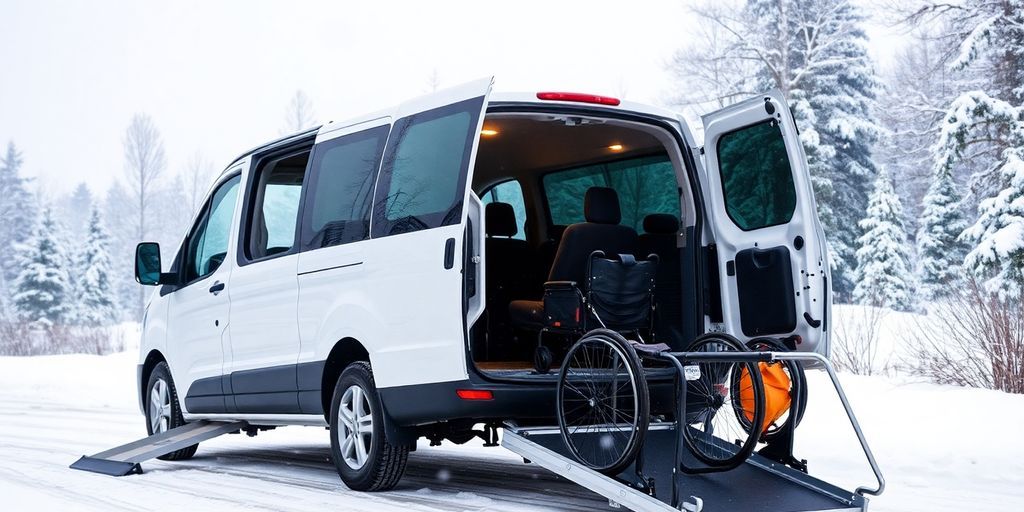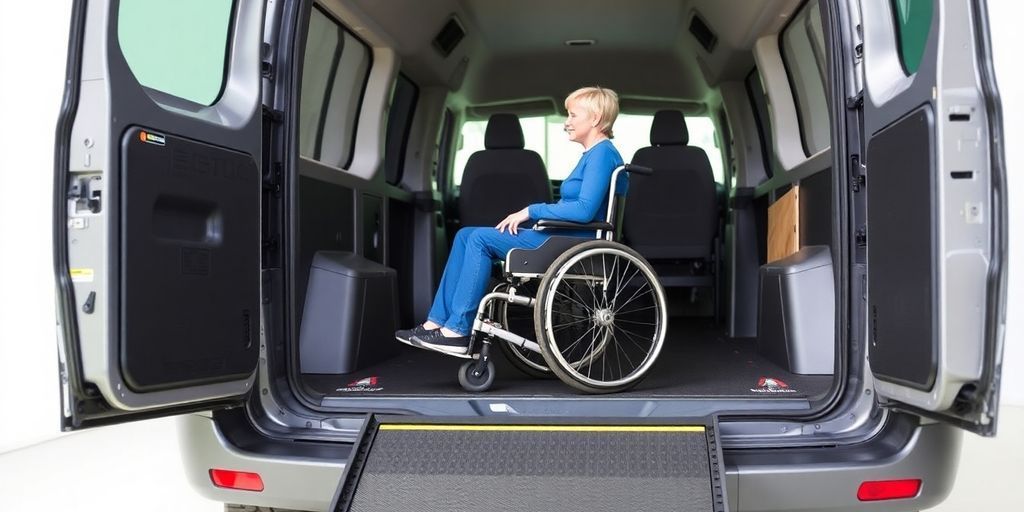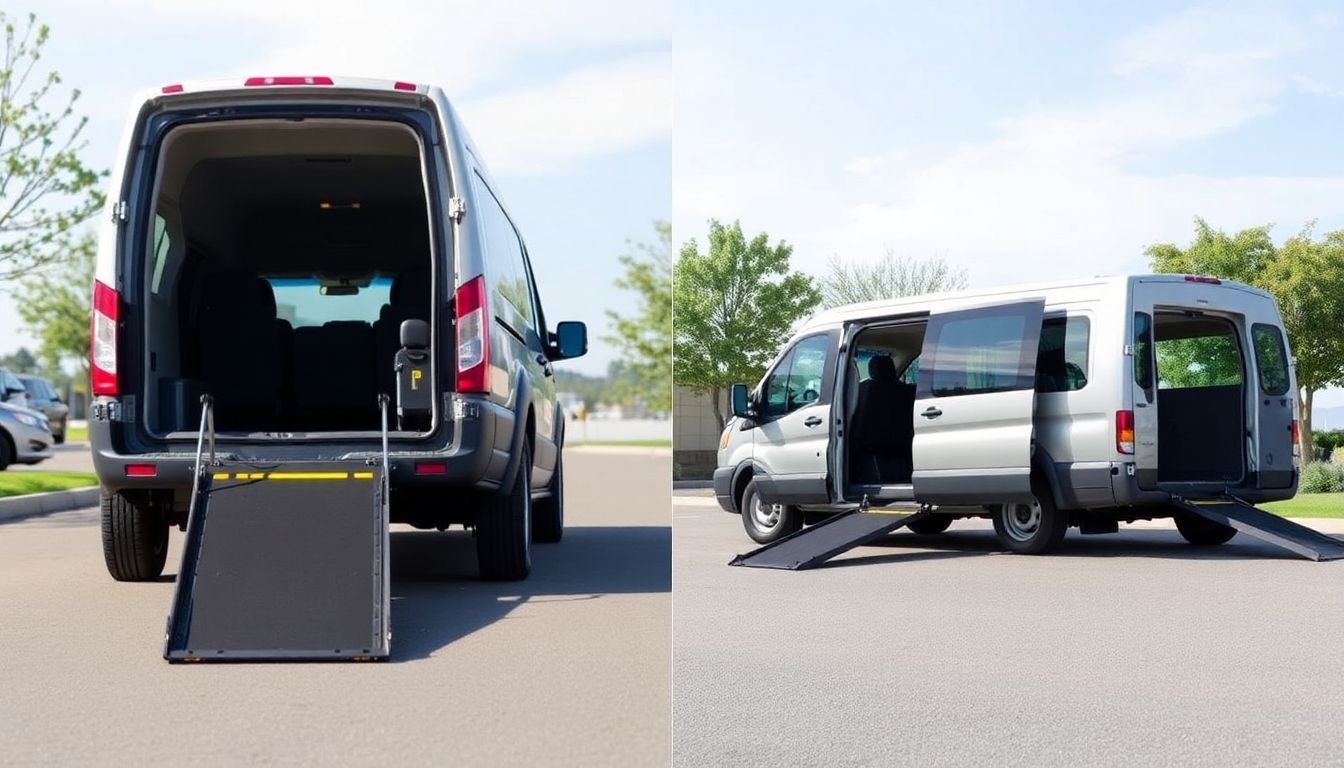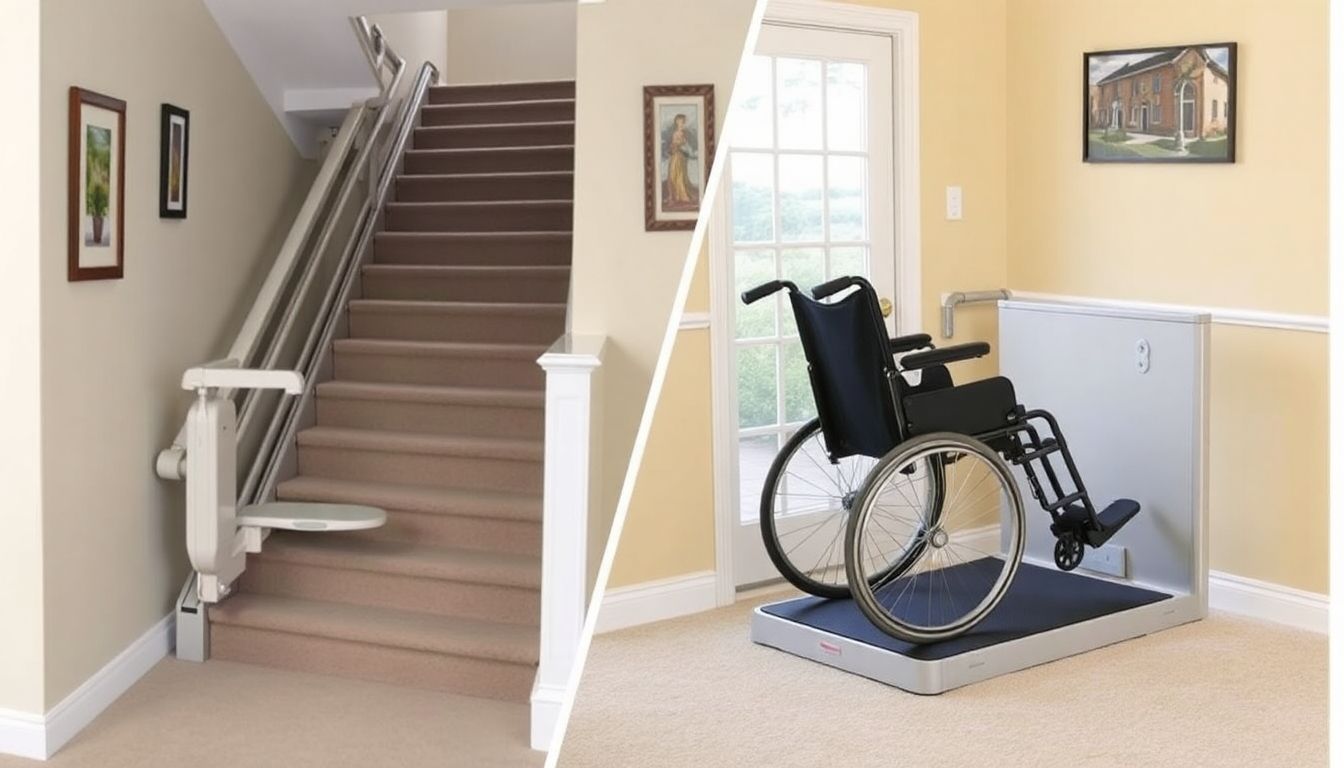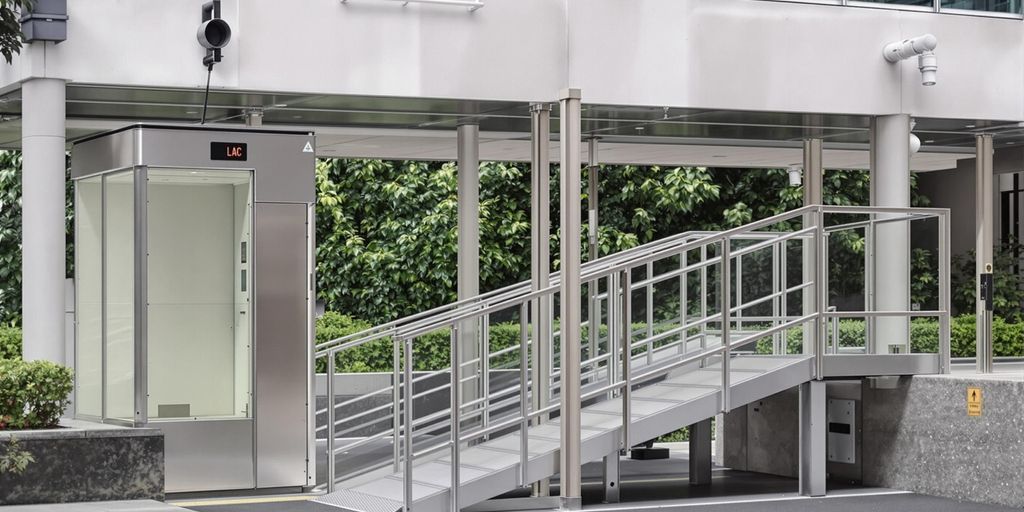What to Consider Before Installing Grab Bars in the Bathroom


Thinking about making your bathroom safer? Installing grab bars might just be the way to go, especially if you have older folks at home. These bars can stop accidents before they happen and give everyone a bit more confidence when moving around. But before you jump in, there are a few things you should know. From picking the right type to figuring out the best spot to install them, there’s more to it than just grabbing a drill. Let’s break down what you need to consider.
Key Takeaways
- Understand the different types of grab bars available and their specific benefits.
- Choose materials that offer both durability and safety for long-term use.
- Think about the best spots in your bathroom for installing grab bars for optimal support.
- Prepare your bathroom walls properly to ensure the grab bars are securely installed.
- Regularly check and maintain your grab bars to keep them in top condition.
Understanding the Importance of Grab Bars for Bathroom Safety
Why Grab Bars Are Essential for Elderly Home Care
As we age, our bodies naturally become less steady, and the bathroom can quickly turn into a danger zone. Grab bars are a vital tool for elderly home care because they offer that extra bit of support when it's needed the most. Imagine trying to get out of a slippery tub or standing up from a low toilet seat without anything to hold onto – it's a recipe for disaster. Grab bars provide the stability needed to navigate these tricky spots safely. They help maintain balance, reduce the risk of falls, and give seniors the confidence to move around independently.
The Role of Grab Bars in Preventing Bathroom Accidents
Bathrooms are infamous for being slippery, with wet floors and smooth surfaces everywhere. It's no surprise that many household accidents happen here. Grab bars act as a safety net, offering a secure place to hold onto when things get slick. They are strategically placed, often near the shower, tub, or toilet, to help prevent slips and falls. This simple addition can make a huge difference in reducing accidents, especially for those who might struggle with mobility issues.
How Grab Bars Enhance Independence and Confidence
For many, maintaining independence is key to a happy life. Grab bars play a crucial role in this by providing the support people need to manage daily routines without assistance. When you know there's something sturdy to grab onto, it boosts your confidence. You’re not just relying on your balance; you have a backup. This sense of security is invaluable, particularly for those who want to stay in their own homes as they age. Grab bars empower individuals to perform tasks like bathing and using the toilet with minimal help, preserving their dignity and independence.
Installing grab bars isn't just about adding a safety feature; it's about creating a space where people feel secure and self-reliant. It’s a small change that can lead to a big improvement in quality of life.
Choosing the Right Grab Bars for Your Bathroom
Types of Grab Bars and Their Benefits
When it comes to grab bars, there's a variety to choose from, each with its own perks. Straight grab bars are the most common and versatile, fitting well in almost any bathroom setup. Then there are the L-shaped ones, which are perfect for corners or areas where you need a bit more support. If space is an issue, consider foldable grab bars that tuck away when not in use. Each type serves a specific need, so think about what works best for your space and who will be using it.
Material Considerations for Durability and Safety
The material you pick for your grab bars can make a huge difference in both durability and safety. Stainless steel is a popular choice because it's strong, rust-resistant, and easy to clean. If you're looking for something that blends with your bathroom decor, consider bars made of brass or even plastic. Just make sure whatever you choose can handle the weight and won't corrode over time. It's important to think about who will be using the bars and ensure the material suits their needs.
Selecting the Appropriate Size and Style
Size and style matter more than you might think. Grab bars come in different lengths—typically ranging from 12 to 48 inches. The right size depends on where you're installing them and how they'll be used. Style is another aspect to consider, especially if you're aiming for a cohesive look in your bathroom. You can find grab bars in various finishes, from shiny chrome to matte black, so there's something for every taste. Remember, the goal is to combine functionality with aesthetics, ensuring the bars are both useful and pleasing to the eye.
Optimal Placement of Grab Bars for Maximum Safety
Key Locations for Installing Grab Bars
When it comes to bathroom safety, knowing where to install grab bars can make all the difference. Strategically placing grab bars in your bathroom is key to preventing slips and falls. Here are some prime locations:
- Near the Shower or Tub: Install a vertical grab bar at the entrance to help with stability while stepping in or out. A horizontal or diagonal bar inside can provide support while showering.
- Beside the Toilet: A grab bar on the wall next to the toilet offers assistance when sitting down or standing up. Consider an L-shaped bar for added support.
- Alongside the Bathroom Walls: Placing grab bars along the walls can help with balance and provide a steady handhold when moving around.
Height and Orientation Guidelines
Getting the height and angle right is crucial for the effectiveness of grab bars. Typically, they should be mounted:
- 34-36 inches above the floor for horizontal bars, which is a comfortable height for most people.
- Vertically at the entrance of showers or tubs to aid in stepping in or out safely.
- Diagonally inside the shower to provide a natural grip and support.
Customizing Placement for Individual Needs
Every individual's needs are different, and so should be the placement of grab bars. Here are some tips to tailor them to specific requirements:
- Consult with an Occupational Therapist: They can provide insights on the best placement according to personal mobility needs.
- Consider the User's Height and Reach: Adjust the height and position of grab bars to fit the user's stature and arm length.
- Adapt for Assistive Devices: If wheelchairs or walkers are used, ensure grab bars are accessible and do not obstruct the path.
Remember, the goal of installing grab bars is not just about meeting safety standards but ensuring they are practical and user-friendly for everyone in the household.
Preparing Your Bathroom for Grab Bar Installation
Assessing Wall Structures and Support
Before diving into the installation, it's super important to know what you're dealing with behind those bathroom walls. Understanding your wall structure can make or break the installation process. Here are a few things to consider:
- Wall Material: Is your wall made of drywall, tile, or something else? This will determine the type of anchors you'll need.
- Stud Location: Use a stud finder to locate studs, as these are the best spots to secure grab bars for maximum support.
- Wall Condition: Check for any signs of damage or weakness that might need fixing before installation.
Knowing your wall's structure ensures that your grab bars will be both safe and durable.
Gathering Necessary Tools and Materials
Once you’ve got a handle on your wall situation, it’s time to gather your tools and materials. Having everything ready before you start can save a lot of headaches. Here’s a basic list:
- Grab Bars: Choose ones that fit your style and needs.
- Drill and Drill Bits: Essential for making holes in the wall.
- Wall Anchors: Especially if you can’t mount directly into a stud.
- Screwdriver: For securing the grab bars in place.
- Level: To ensure everything is straight.
Having the right tools on hand is half the battle won.
Ensuring Compliance with Safety Standards
Safety first, right? You want to make sure your grab bars aren’t just handy but also meet the necessary safety standards. This is crucial for peace of mind and ensuring they do their job effectively.
- ADA Compliance: Check if your grab bars meet the standards set by the Americans with Disabilities Act.
- Weight Capacity: Ensure they can support at least 250 pounds, though many are rated for more.
- Proper Installation: Follow the manufacturer's instructions carefully to maintain safety ratings.
Ensuring compliance with safety standards not only protects you but also prolongs the life of your grab bars.
The Installation Process: Step-by-Step Guide
Tools and Materials Needed for Installation
Before diving into the installation, gather all the necessary tools and materials. Having everything ready will make the process smoother and less stressful. Here's what you'll need:
- Drill and Bits: Essential for creating holes in walls.
- Stud Finder: To locate the studs in your walls for secure mounting.
- Tape Measure: For precise measurements.
- Eye Protection: Safety first!
- Grab Bars: Make sure they're the right type and size for your needs.
- Wall Anchors: If you're not mounting directly into studs.
- Painter’s Tape: Useful for marking drill spots without damaging walls.
Step-by-Step Instructions for Secure Installation
Installing grab bars is straightforward if you follow these steps:
- Choose the Location: Decide where the grab bars will be most useful, typically near toilets and in showers.
- Mark the Drill Spots: Use the painter’s tape to mark where you'll drill. This helps prevent the drill bit from slipping.
- Locate the Studs: Use the stud finder to ensure you're drilling into a stud for maximum support.
- Drill Pilot Holes: Use a drill bit slightly smaller than your screws to make pilot holes.
- Mount the Grab Bars: Attach the grab bars using the screws provided. Make sure they're secure by giving them a good tug.
Common Challenges and How to Overcome Them
While the process is generally simple, you might encounter some hiccups:
- Finding Wall Studs: If you're having trouble, double-check with the stud finder or consult a professional.
- Dealing with Tile Walls: Use a masonry bit to avoid cracking tiles when drilling.
- Ensuring Weight Capacity: Make sure the grab bars are rated for the weight they need to support.
Installing grab bars can significantly enhance bathroom safety. Regular checks and maintenance ensure they remain effective and secure.
Maintaining and Inspecting Your Grab Bars
Regular Maintenance Tips for Longevity
Keeping your grab bars in tip-top shape isn't just about looks—it's about safety too. Here are some easy tips to keep them in working order:
- Check for loose screws or bolts regularly. A wobbly grab bar is a no-go.
- Wipe them down with mild soap and water to keep grime at bay. This keeps them looking nice and prevents build-up.
- Keep an eye out for rust, especially in damp spots like the shower. Rust can weaken the bar and make it unsafe.
A little upkeep goes a long way in ensuring your grab bars remain a reliable support.
Signs That Your Grab Bars Need Replacement
Knowing when to swap out your grab bars is crucial. Here’s what to watch for:
- Rust or corrosion that's more than just surface deep.
- Cracks or any kind of breakage in the bar itself.
- If it feels loose or wobbly when you grab it, it's time for a change.
Professional Inspection Services for Safety Assurance
Sometimes, a professional's eye is what you need to make sure everything's up to snuff. Here's why you might want to consider it:
- They can check the quality of the installation to ensure it's up to standard.
- Professionals can recommend replacements or adjustments if needed.
- They ensure that your grab bars are compliant with safety standards.
Bringing in a pro can give you peace of mind that your home is as safe as it can be.
Cost and Funding Options for Grab Bar Installation
Understanding the Costs Involved
Installing grab bars isn't just about buying the bar itself. There's more to it, like the labor and any extra work needed to make sure they're secure. Typically, you might spend anywhere from $100 to $300 per grab bar. Here's why:
- Type of Grab Bar: If you're going for something fancy or extra sturdy, that can bump up the cost.
- Installation Fees: Hiring someone to do it right? Expect to pay between $50 to $150 per hour.
- Wall Reinforcements: Sometimes, your bathroom walls might need a bit of beefing up to safely hold the bars.
Exploring Insurance and Funding Options
Not everyone knows this, but there might be funding out there to help with grab bar costs. Here are a few avenues to explore:
- Government Grants: Some local and federal programs offer support for home safety upgrades.
- Insurance Coverage: It's worth checking if your policy covers home modifications.
- Non-Profit Assistance: Groups like Rebuilding Together often help out low-income families.
It's smart to dig into all the available options to make sure you can afford these important safety features.
Getting a Free Quote from Local Installers
Before you settle on anything, it's a good idea to get a few quotes. This way, you can compare prices and services. Here's how to go about it:
- Research Local Installers: See what others are saying about them.
- Request Quotes: Reach out to at least three installers to get a sense of the costs.
- Ask About Discounts: Some places might offer deals for seniors or veterans.
For those considering broader bathroom modifications, keep in mind that basic handicap shower installation costs can range from $2,000 to $5,000, which often includes essentials like non-slip flooring and grab bars.
If you're considering installing grab bars, understanding the costs and funding options is essential. We can help you navigate through this process. Visit our website to get a free quote and learn more about how we can assist you with your mobility needs!
Conclusion
So, there you have it. Installing grab bars in your bathroom isn't just a good idea—it's a smart move for safety and peace of mind. Whether you're doing it for yourself or a loved one, these bars can make a world of difference. They help prevent slips and falls, which is a big deal, especially in a place as slippery as a bathroom. Remember, it's not just about picking any grab bar; it's about choosing the right one and putting it in the right spot. And while you might be tempted to DIY, sometimes calling in a pro is the best way to go. They know the ins and outs and can make sure everything's secure. So, take a look around your bathroom, think about where you need that extra support, and get started. It's a small change that can make a big impact.
Frequently Asked Questions
What exactly are grab bars, and why are they needed?
Grab bars are sturdy bars that help people keep their balance and avoid falls, especially in wet places like bathrooms. They are vital for safety as they offer support when moving around.
Where should grab bars be installed in a home?
Grab bars should be placed in areas where extra support is needed, like near toilets, in showers, or by steps. It's best to put them where they can provide the most help.
Is it possible to install grab bars on my own, or should I hire someone?
While some people can install grab bars themselves, it's often safer to hire a professional. They can ensure the bars are properly and securely installed.
How much does it typically cost to have grab bars installed?
The cost of installing grab bars can vary. It usually depends on the type of bar and the complexity of installation, ranging from $100 to $300 per bar.
What types of grab bars are available for bathrooms?
There are several types of grab bars, including straight bars, L-shaped bars, and foldable ones. The choice depends on the specific needs and space available.
How do I choose the right grab bars for my bathroom?
When choosing grab bars, consider the material, length, and weight capacity. Stainless steel is durable, and the bar should be long enough to provide adequate support.

